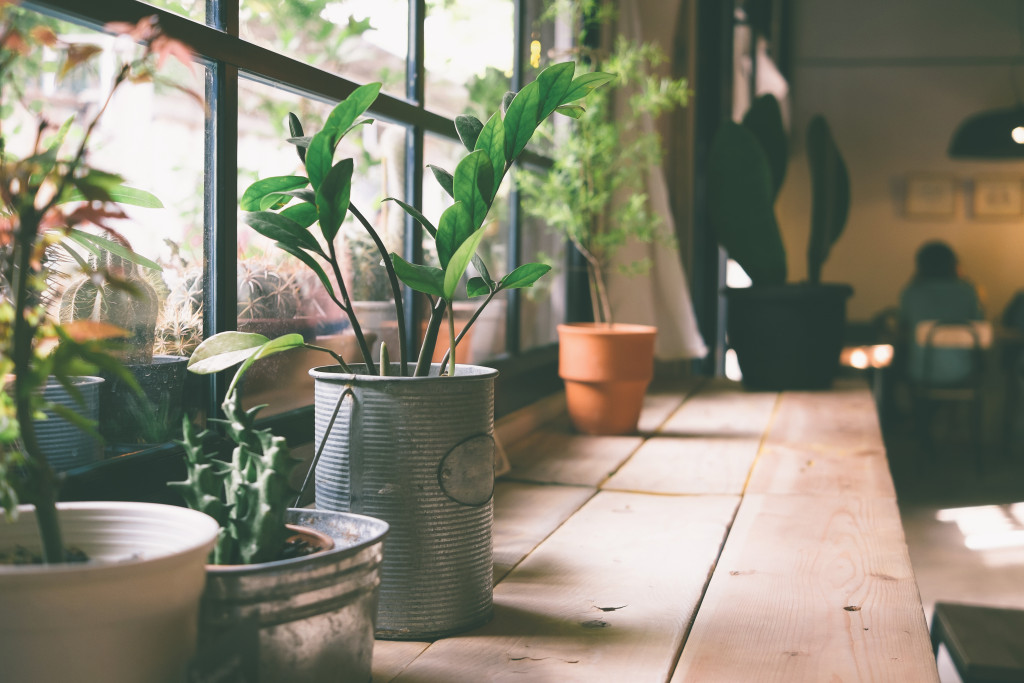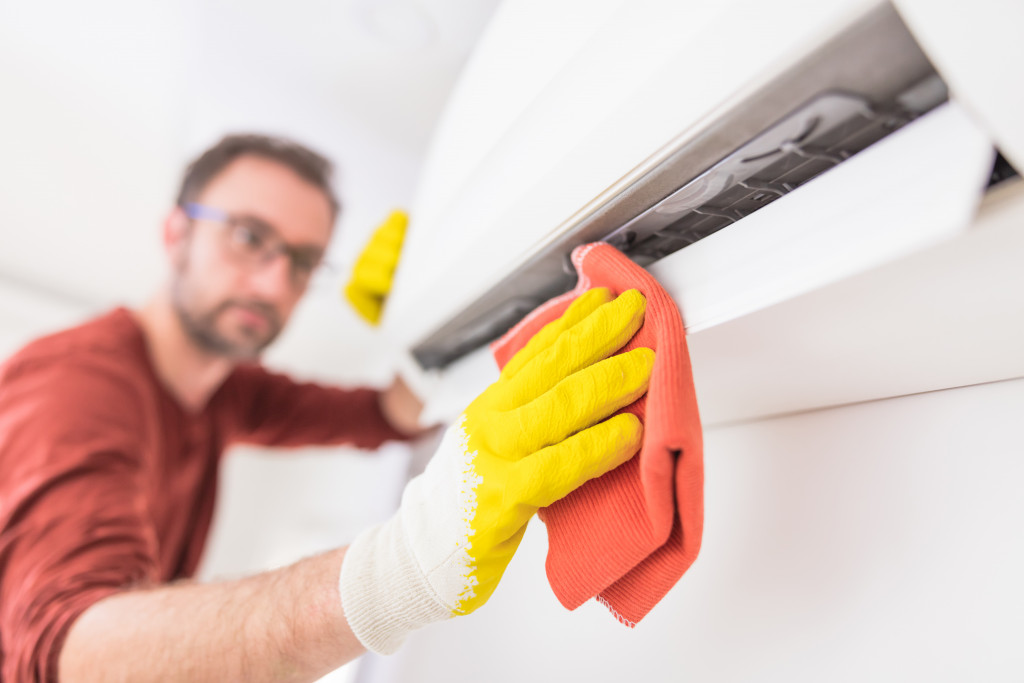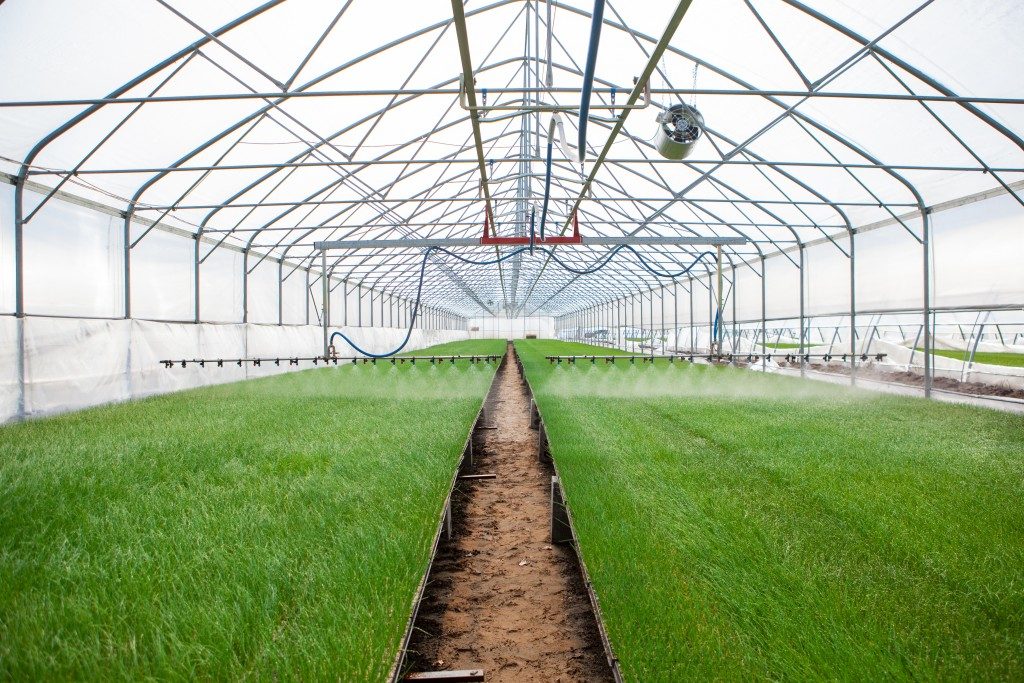- Choose natural materials certified to reduce emissions of harmful chemicals.
- Invest in landscaping with native shrubs and trees for energy efficiency and water conservation.
- Improve indoor air quality by selecting paints with low VOCs, installing an air filter, and setting up a heat recovery ventilator.
- Install energy-efficient appliances such as LED lighting, smart appliances, and solar panels to reduce your energy bills.
Home improvement projects can be meant to enhance your spaces with beautiful aesthetics and convenience or for go-green initiatives to increase environmental sustainability. The question is, how can you choose materials and renovation projects that do not compromise indoor air quality or your health? With so many options to choose from, it becomes challenging to make the best choices and not fall into the trap of greenwashing. Here’s how you can easily navigate this challenge.
Choose natural materials:
Opt for all-natural materials, particularly when installing new floors or furniture. These materials can include recycled wood pallets, bamboo, cork, or organic linoleum.
Such materials do not emit harmful chemicals during their lifespan, unlike other engineered materials. For instance, carpets can contain antimony, vinyl flooring can release phthalates, and insulation can be made from formaldehyde-treated wood fiberboard.
If possible, look for materials that have been certified as Greenguard Gold or FloorScore. These certifications ensure that the products meet stringent health and safety standards.

Invest in landscaping:
Having efficient landscaping not only adds aesthetic value to your yard but can also be an effective way to reduce energy consumption. Plant native shrubs and trees which are well-suited to the region’s climate and require little maintenance.
For instance, a tree that provides shade on the hottest days will help keep the outdoor air temperatures cooler without the need for air conditioning. In addition, shrubs around windows and doors could help reduce energy consumption by blocking out cold winds in winter and providing shade from direct sunlight in summer.
Installing a rain barrel or cistern can allow you to capture excess water from rainstorms and use it for watering plants during dry periods. This is an effective way to conserve water and reduce your water bill.
Improve indoor air:
Indoor air pollution comes from home products, including furniture, cleaning products, and paints. Avoid exposing yourself and your family to toxins by ensuring proper ventilation. Here are other ideas:
Choose paints with low VOCs
When renovating your home, you will probably need to paint your space to give it a fresh look. Go for products with low volatile organic compounds (VOCs) to avoid releasing chemicals into your indoor spaces. These are usually labeled ‘Low VOC’ or ‘Zero VOC.’
Install an air filter
Air filters provide a useful way to rid your home of airborne pollutants, dust mites, mold spores, and other contaminants. They are an inexpensive and convenient way to improve air quality in your home. Choose one with a high MERV rating for the best results.
Set up a heat recovery ventilator (HRV)
Installing a heat recovery ventilator (HRV) in your home is a great way to balance air moisture levels and improve air quality. It generally exchanges stale indoor air with that from the fresh outdoors while also recovering the heat from the outgoing air. This can help reduce humidity and eliminate pollutants that are stuck in your home.

Choose energy-efficient appliances:
Energy-efficient appliances will not only reduce your energy bills, but they are eco-friendly. Besides, they are designed to emit fewer harmful emissions, hence improving indoor air quality. Here are some examples:
LED Lighting
LED lighting is one of the most energy-efficient lighting solutions available. LED bulbs consume up to 90% less energy than conventional bulbs, reducing electricity costs and carbon emissions.
In addition, LED bulbs are designed to last up to 25 times longer than traditional incandescent bulbs, meaning they require fewer replacements over time. Because they generate little heat, LED bulbs are also safer to use and provide more natural light.
Smart Appliances
Smart appliances are designed to use less electricity than traditional models and come with advanced features that let you control the temperature or other settings from your smartphone. They can be integrated into a home automation system for greater convenience and energy savings.
Solar Panels
Solar panels are a great way to reduce your energy bills, as they take advantage of the natural resources of the sun. With solar panels, you can generate your own electricity and even sell excess power back to the grid.
Improving your home with attention to the environment and health can be an overwhelming task. However, implementing these simple tips can make the process easier and more productive. By choosing natural materials, low VOC paints, improving indoor air, selecting energy-efficient appliances, and enlisting the help of a qualified professional, you can ensure that you make environmentally conscious choices that will enhance your home’s ambiance and meet your needs for a healthier space. Remember, selecting eco-friendly materials and products benefits the environment and your health.

